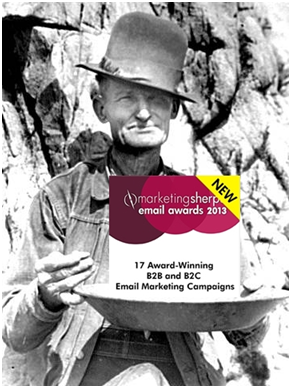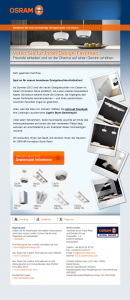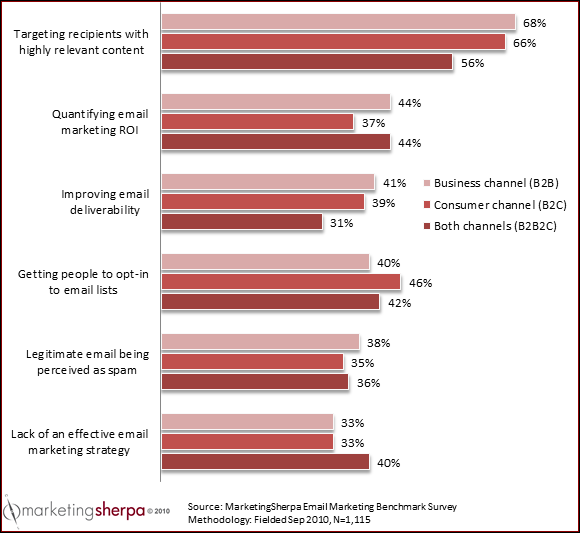It’s the most wonderful time of the year…that is, unless you’re trying to minimize the amount of extra work you need to do before the calendar flips to 2011. Every December, my inbox lights up like Rockefeller Center, filled with email and social media requests from various publications asking me to submit my thoughts about the year that’s ending, and the one yet to come.
These crowdsourcing efforts are a great opportunity for so-called “personal branding” and “thought leadership” for the average marketer. But as much as I’d love to share my ideas with every one of these outlets, like many of you, I simply don’t have the time to do so. So when I do take the time, I want to make sure my ideas get picked. But what stands out?
How to grab attention
Well this year I have a unique perspective on the topic because I’m sitting on the other side of the submission form as well – I’m editing MarketingSherpa’s 2011 Wisdom Report. If you’re not familiar with our Wisdom Report, it’s a little New Year’s gift we distribute free to our audience of 237,000 readers. You can take a look at last year’s Wisdom Report for real-life stories and lessons from 70 of your fellow client- and agency-side marketers to see what I’m talking about.
Based on this experience, I’ve discovered an area that I’ve gained significant wisdom in – crafting a successful crowdsourcing submission. So if you do take the time to share your knowledge, it’s worth your while. (Some of this might apply to you public relations folks as you pitch media outlets as well.) And if you’d like to share your wisdom with our audience, I’m all ears.
1. Sometimes, simpler is better.
As much as we love to hear results, it’s not necessary to provide us your company’s bottom line or a three-part novella in order to have your entry published in the Wisdom Report. Sometimes, the simplest, most concise entry can evoke more inspiration than reams of positive results. Below are two of our favorites from the 2010 Wisdom Report (and based on feedback we received, they were among your favorites, as well):
“Consistently recognize the individual efforts of team members. Be specific. Be appreciative. Especially this year – when budgets are tight, tensions are high, and pay raises but a dream – affirmation and acknowledgement becomes even more meaningful. Making it a point to do this can positively alter the culture of an organization. I’ve seen it happen!”
And of course, there’s always the “Golden Rule”:
“Never undermine people who are working for/with you, and who you are working for…”
If that doesn’t qualify as universal wisdom, I’m not sure what does.
2. Be honest. Be yourself. Be real.
A trite platitude? Perhaps. But not all platitudes are without value. Each year, the Wisdom Report provides a forum for marketers to speak candidly about both successes and failures, explaining how their outcomes become lessons – lessons that provide a basis for future planning and a better understanding of their respective situations.
And, with the country still struggling within a tough economy, there are undoubtedly many of you who were forced to find new ways and means to stay afloat – and stay profitable – in 2010. You’re not alone.
As much as necessity is the mother of invention, our recent economic struggles have to be considered the mother of innovation – innovation that drove you to maximize limited marketing budgets, test new ideas and hopefully, create new opportunities to build upon for future success.
In short, the most successful Wisdom Report submissions are the ones that put aside the usual posturing and marketing-speak, and replace them with honest reflection to be shared with your peers.
~~~~~~~
As mentioned earlier, with each year that we publish the Wisdom Report, we also receive an increasing number of entries that deviate from our intended focus. These “rogue” entrants often choose to entertain more than enlighten, and promote more than they inspire. Because of this, they also don’t get in.
Let’s discuss what not to do when composing your 2011 Wisdom Report entry.
3. Laughter isn’t always the best medicine…especially when the medicine isn’t funny in the first place.
I think we all know, whenever you post an online entry form, you run the risk of a few attention-starved individuals (or bots) trying to garner a few seconds in the spotlight. Sometimes these submissions can be amusing. Sometimes, they even contain a modicum of relevance to the topic at hand. But most of the time, Web-trolling Shecky Greenes provide entries more akin to this 2009 slice of hilarity:
“You can tune a piano, but you can’t tuna fish.”
— H. Jass, (company and location unknown)
First off, this is a family publication, so I’ll just let you figure out what the “H” in this person’s name actually represents. But more importantly, this one-liner wouldn’t sound right coming out of my crazy uncle’s mouth, much less that of a respected marketer. This is more an example of failed spam filter than it is a legitimate submission. But, as you’ll see, humor doesn’t quite get the job done in the following entry, either:
“If it ain’t broke, you probably haven’t tested it in Outlook or Internet Explorer yet.”
Yes, this is a more intelligent, amusing entry than the one above. But it’s still not exactly “wisdom,” now is it? Since our website and publications reach a fairly targeted audience, it’s safe to assume that this person isn’t just an Internet wise guy, but more likely a marketer who believed that this humor would somehow fit right alongside submissions from our focused, business-minded reader population.
Had this entry been accompanied by an anecdote explaining how his/her company saved money in a tough economy by eschewing enterprise software for open source offerings, then the quote isn’t only amusing, but also relevant to a broader audience.
4. Proofreading proves wisdom.
One thing that remains great about the Wisdom Report each year is how it allows marketers to represent themselves, and their companies, in their own words, rather than through homogenized “marketing-speak.” This is why it’s so important to spend a few minutes reviewing your submission, rather than quickly hammering out an entry replete with typos, grammatical errors and other mistakes that could possibly present you in a less-than-flattering light.
Note that we only edit submissions for simple errors. If a submission is written in a way that makes it difficult to decipher, we simply don’t use it, even if it contains a wealth of valuable information underneath the typos. It’s not feasible for us to contact you for clarification, nor do we publish inaccurate, error-filled copy.
Bottom line – a few extra minutes with a red pen could garner your words – and possibly, your company – some very valuable exposure with our readership. Don’t let your haste turn into our waste.
One example of this is an excerpt from last year’s Wisdom Report:
“Ranking Ranking..I want our site to be ranked number 1..” Sounds familiar ? From your clients ? Or from your management ? Many site owners fall into this, even till the extend of entering keywords they feel they should be ranked the number 1 spot which they haven’t. And they could rant on and on with ever debates on keyword rankings. Without even realizing does the ranking actually correlate to targeted traffic and eventually successful conversions which relates back to the overall business goals and objectives…”
As you can see, this person clearly had a number of thoughts about SEO and search marketing. But, while the “stream of consciousness” tone gives this entry a sense of enthusiasm, it was simply too grammatically poor to enter as-is.
Because of the inherent value in this person’s complete submission, we chose to edit and use it in the book. But, once we begin rewriting a submission for grammar and punctuation, it can no longer truly be considered “in your own words” – which simply isn’t in line with the spirit of this publication.
5. Show, don’t tell. And no matter what, please don’t sell.
I can already hear the uproar – “How are we supposed to discuss our successes without promoting our [companies/products/brands/taglines/other]???”
Simple. Tell us a story that has universal value – value that can be applied across tactics, industries, borders and cultures. Tell us what worked and what didn’t. Tell us about creative new risks or your back-to-basics approach. Don’t just tell us that you’re even more amazing than you already were – tell us why and how you’ve improved.
Once more with feeling, from the 2010 Wisdom Report:
“My embroidery and logowear business, [company name], is one of only a few in our industry to find success using a Web-based model, and I’m convinced it’s because we’ve been able to take our key differentiators — including exceptional customer service — and effectively communicate them to an online audience…”
The above is the (submitted) opening line from one of last year’s contributors. At its core, this is a very strong sentence that serves to introduce a solid anecdote about simplicity in Web design and online forms. The problem is that in order to get to that solid anecdote, you had to endure a) the company name and target market, b) a self-serving statement about the company’s superiority in its space, and c) a thinly-veiled pat on the back.
It’s not that the company doesn’t deserve accolades. It’s that only after the reader gets past this boilerplate copy does the submission demonstrate its true value. And, following some extensive details, we read:
“Conversions increased 49 percent with the new form, cementing for us the idea that people want to do business with people, not with Web sites.”
This simple statement offers us a concrete metric, and more importantly, a statement about how this new tactic led to a valuable lesson that is applicable beyond this specific business.
I think you get the point.
We’re sure you’ve got a great story to tell that will help make us all better marketers in 2011. And we look forward to reading them.
Related resources
Submit your 2011 Wisdom Report entry
2010 MarketingSherpa Wisdom Report
Public Relations: The best press release is no press release
 Marketing Awards 2013, sponsored by Responsys. In this session, our winner, The National Football League, will discuss its fantastic NFL.com newsletter campaign.
Marketing Awards 2013, sponsored by Responsys. In this session, our winner, The National Football League, will discuss its fantastic NFL.com newsletter campaign. Ritos GmbH, a consumer electronics company, submitted the OSRAM Innovation Store “Light ‘n’ Style” contest for Email Awards 2013. It was the one entrant in its category that bridged the gap between creativity and results, as it successfully tied together three key factors of an efficient, integrated email campaign:
Ritos GmbH, a consumer electronics company, submitted the OSRAM Innovation Store “Light ‘n’ Style” contest for Email Awards 2013. It was the one entrant in its category that bridged the gap between creativity and results, as it successfully tied together three key factors of an efficient, integrated email campaign:


 Please forgive me for opening this post with a trite statement, but I simply cannot believe we’re already approaching the end of 2011.
Please forgive me for opening this post with a trite statement, but I simply cannot believe we’re already approaching the end of 2011.






